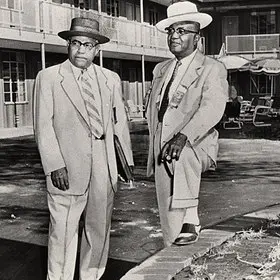A New Era of Justice
May 19, 2020
Preservation is about community.
Now is a time for us to come together as we have so many times before, but with a new sense of urgency and inclusion, and in ways that will last beyond the coronavirus crisis. As important visual and cultural clues, the places we preserve hold promise for the future we seek to reclaim, and each site stands as an historical indicator of our complex present. We need old buildings as much as old buildings need us. They prompt us to remember who we are.
The COVID-19 virus has devastated many across the country, but due to disinvestment and systemic policies, African Americans and communities of color have been disproportionately affected. Our nation is again reminded that this disparity mirrors and reflects historical and racial inequities. We are being reminded to face the truth about our past.

photo by: Carol M. Highsmith, Library of Congress
Frederick Douglass National Historic Site
As a movement, preservation has also mirrored traditional social values. Yet, if we lean into hope and take time to self-reflect, we can be the change we seek. We can draw lessons from the past to create a prosperous future, while also reflecting on the promise of preservation as an equity-driven movement. In our individual moments of stillness, we should ask ourselves: Can we confront the economic challenges of COVID-19 and ignite a contemporary preservation movement as a force for positive social change? How can we weave a tapestry of places and stories to tell our full, shared history? Can we challenge ourselves to realize equity-driven outcomes that benefit all Americans? Because when we collaborate, we have the capacity to create a national identity that reflects the country’s true diversity.
In the spirit of envisioning a more prosperous and inclusive future, I invite you to join me for a special Virtual Preservation Month event with Ms. Phylicia Rashad, co-chair of the National Trust’s African American Cultural Heritage Action Fund on Friday, May 22, at 1:30 p.m. ET. (Register in advance for the webinar.) In our conversation, we will discuss the power of preservation, the work of the Action Fund, and the historic African American places that inspire all Americans to build a better world.
Our forebearers responded to earlier preservation threats and injustices with dogged leadership, tenacious thinking, and community organizing. From the foundational work of Ann Pamela Cunningham and the Mount Vernon Ladies’ Association, to the groundbreaking activism of Mary B. Talbert and the National Association of Colored Women, our ancestors ignited our movement by honoring the cultural memories of George Washington and Frederick Douglass. Just like these trailblazing women, we have the fortitude to walk in their footsteps and prove that by cooperative agreement we can measure up. As social critic and author James Baldwin said, “Not everything that is faced can be changed, but nothing can be changed until it is faced.”
The African American Cultural Heritage Action Fund will continue to examine and eliminate inequities through new forms of partnership, interpretation, and funding. Our leadership is about pursuing an idea, something yet to be seen, and a culture of learning to increase our relevancy and impact. We promote preservation as economic and social justice. We partner with humility in service of African Americans whose overlooked stories and contributions provide strength and examples of overcoming impossible-seeming odds. We draw inspiration and resilience from African American historic places.
Historic sites that bring forward a diverse and inclusive national narrative are playing a crucial role in redefining our collective history and, meaningfully, expanding the preservation movement in equitable ways. These cultural assets help us all walk toward a new era of justice. May our nation face its past to create a more just American culture with preservationists on the front lines protecting and preserving our diverse historic places and communities.






